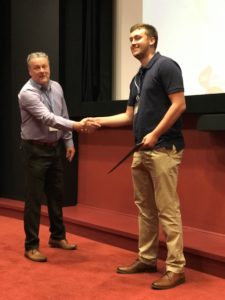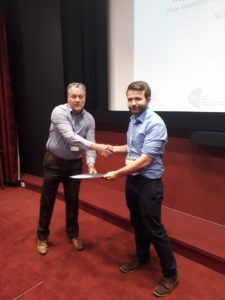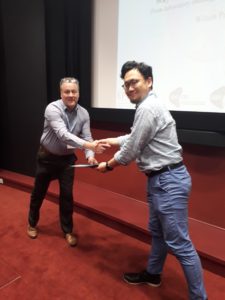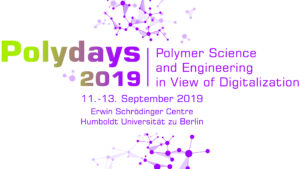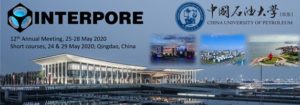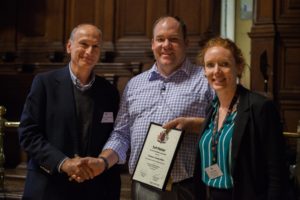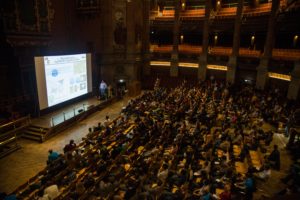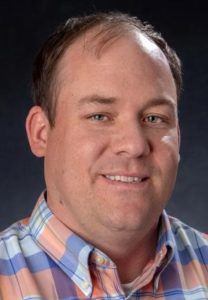This week’s issue of Soft Matter is our 2019 Emerging Investigators issue, which contains articles from soft matter researchers in the early stages of their independent careers and is accompanied by an Editorial from Editor-in-Chief Professor Darrin Pochan. To celebrate this issue we are delighted to feature the profile of Professor Anderson Shum, who published in our 2017 Emerging Investigators issue. Below, Anderson talks about his research journey, from student to Associate Professor, and his feelings towards Soft Matter!
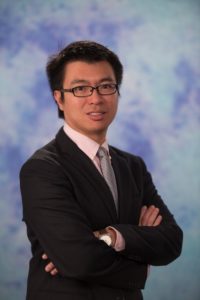 “I started my scientific career as a student working on photocatalysis of titanium in the summer at Technion after my high school, and assembly of surfactants onto metallic substrates during my undergraduate studies at Princeton. All of these helped cultivate a deep interest in topics relevant to Soft Matter. I was initially excited by soft matter areas because of the pretty microscopic pictures that you can see. Afterwards, I was intrigued by the set of tools that emerge, such as microfluidics, for manipulating soft matter systems. Recently, I am becoming more convinced how findings in soft matter can benefit a plethora of applications, ranging from food to biomedicine.
“I started my scientific career as a student working on photocatalysis of titanium in the summer at Technion after my high school, and assembly of surfactants onto metallic substrates during my undergraduate studies at Princeton. All of these helped cultivate a deep interest in topics relevant to Soft Matter. I was initially excited by soft matter areas because of the pretty microscopic pictures that you can see. Afterwards, I was intrigued by the set of tools that emerge, such as microfluidics, for manipulating soft matter systems. Recently, I am becoming more convinced how findings in soft matter can benefit a plethora of applications, ranging from food to biomedicine.
The journal, Soft Matter, addresses all of these interesting topics, and reports the latest discoveries and applications, always showcasing some fascinating pictures and explaining new science in an easy-to-understand manner. The articles often contain very illustrative figures and schematics that elucidate an otherwise difficult concept to understand. Soft Matter sets itself apart from many journals, as it can be a relaxing and enjoyable read. Currently, most, if not all, of my research hinges on some aspects of soft matter science, probably because of its ability to keep the interests of mine and my students’ high.“
Read Anderson’s Soft Matter papers below!
1. Coalescence of electrically charged liquid marbles Soft Matter, 2017, 13, 119-124 (Emerging Investigators 2017 Issue)
2. Partitioning-dependent conversion of polyelectrolyte assemblies in an aqueous two-phase system Soft Matter, 2018, 14, 1552-1558
3. Capillary micromechanics for core–shell particles Soft Matter, 2014, 10, 3271-3276
4. Engineering polymeric composite particles by emulsion-templating: thermodynamics versus kinetics Soft Matter, 2013, 9, 9780-9784
These articles are all FREE to read and download until the 20th March
Biography
Anderson Ho Cheung Shum received his B.S.E. degree in chemical engineering from Princeton University, S.M. and Ph.D. in applied physics from Harvard University. He is currently an Associate Professor in the Department of Mechanical Engineering and the Biomedical Engineering Programme in the University of Hong Kong. His research interests include microfluidics, microscaled fluid flows, emulsion-templated materials and soft matter.
Anderson was a HK nominee for the 2017 APEC Science Prize for Innovation, Research and Education (ASPIRE Prize), and an awardee for the Early Career Award by the Research Grants Council of Hong Kong in 2012, HKU Outstanding Young Researcher Award 2016-17, silver medal in 46th International Exhibition of Inventions (Geneva, Switzerland) in 2018 and IEEE Nanomed 2018 New Innovator in 2018. He was selected to join The Royal Society of Chemistry as a fellow in 2017 and The Young Academy of Science of Hong Kong as a founding member in 2018. He is a top 1% scholar by Clarivate Analytics’s Essential Science Indicators in 2018. He is an Associate Editor for Biomicrofluidics (American Institute of Physics (AIP), starting January 2019), Editorial Board member for Scientific Reports (Nature Publishing Group) and an Editorial Advisory Board member for Lab-on-a-Chip (Royal Society of Chemistry (RSC)).
Comments Off on Spotlight on Anderson Shum: 2017 Soft Matter Emerging Investigator












